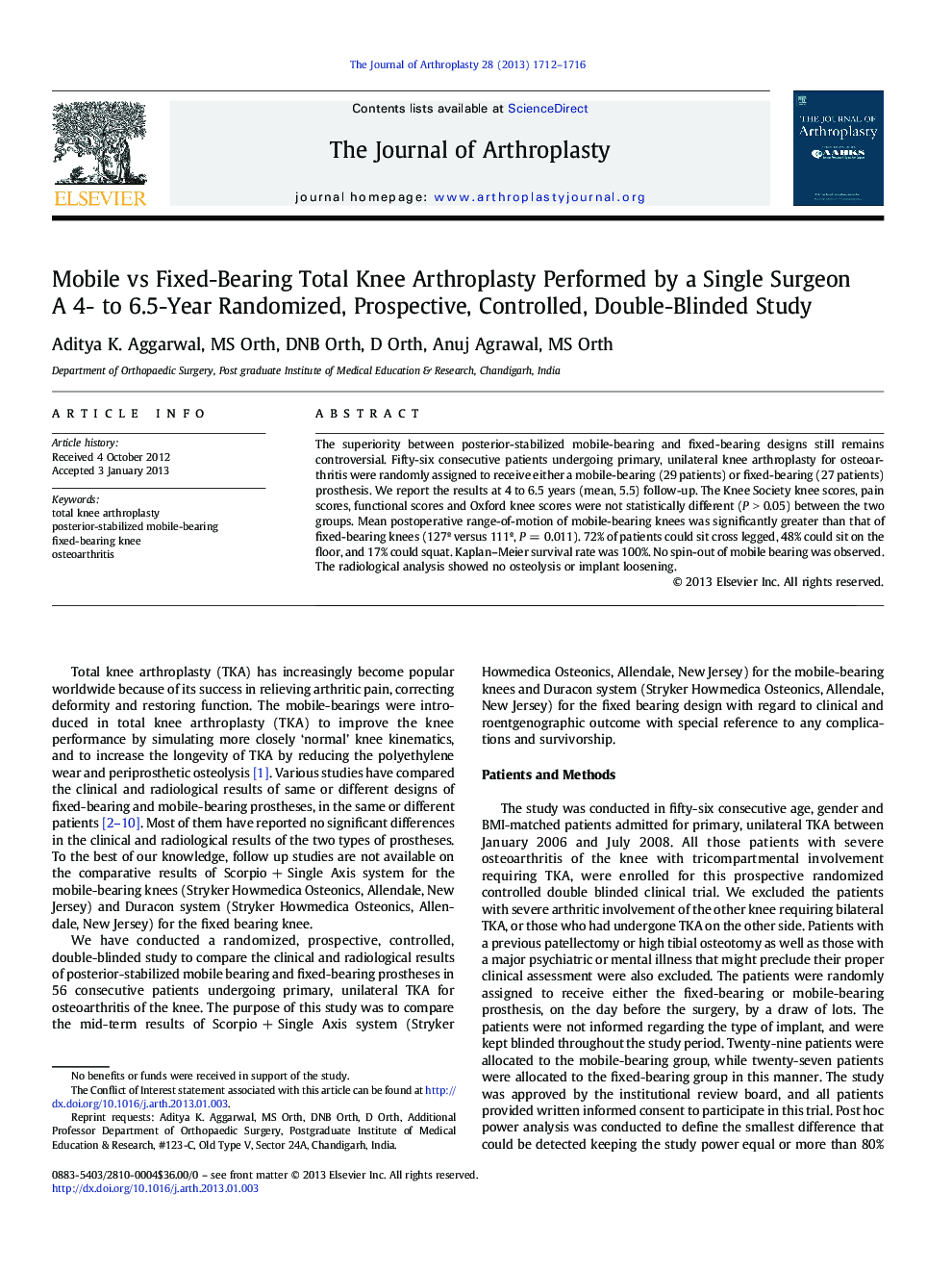| کد مقاله | کد نشریه | سال انتشار | مقاله انگلیسی | نسخه تمام متن |
|---|---|---|---|---|
| 4060620 | 1604009 | 2013 | 5 صفحه PDF | دانلود رایگان |

The superiority between posterior-stabilized mobile-bearing and fixed-bearing designs still remains controversial. Fifty-six consecutive patients undergoing primary, unilateral knee arthroplasty for osteoarthritis were randomly assigned to receive either a mobile-bearing (29 patients) or fixed-bearing (27 patients) prosthesis. We report the results at 4 to 6.5 years (mean, 5.5) follow-up. The Knee Society knee scores, pain scores, functional scores and Oxford knee scores were not statistically different (P > 0.05) between the two groups. Mean postoperative range-of-motion of mobile-bearing knees was significantly greater than that of fixed-bearing knees (127º versus 111º, P = 0.011). 72% of patients could sit cross legged, 48% could sit on the floor, and 17% could squat. Kaplan–Meier survival rate was 100%. No spin-out of mobile bearing was observed. The radiological analysis showed no osteolysis or implant loosening.
Journal: The Journal of Arthroplasty - Volume 28, Issue 10, December 2013, Pages 1712–1716